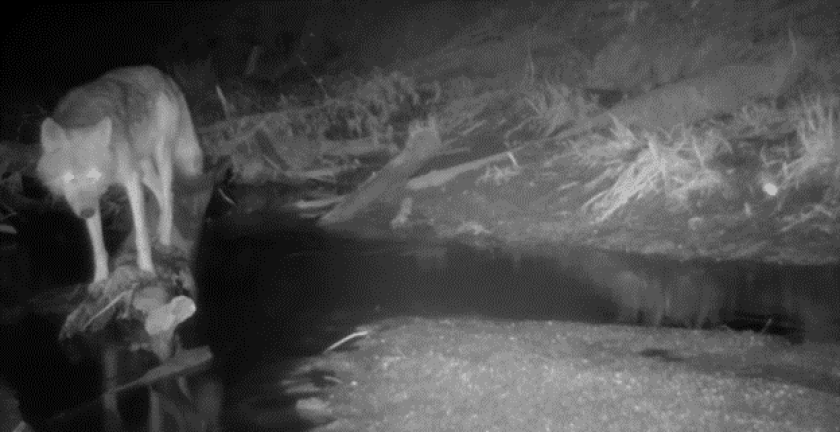Minnesota wolves eating fish wasn't a fluke — it's a thing - Perham Focus
KABETOGAMA LAKE — When researchers at the Voyageurs Wolf Project first captured video of wolves catching and eating fish out of a small stream back in 2017, they thought it was probably a unique occurrence.
Now, upon further research, the biologists have found that many wolves across their Northland range likely target and catch fish in the spring — a good source of protein at just the right time of year when other food is not abundant.
In a study published in the May issue of the journal Royal Society Open , the wolf project scientists found wolves returning to their favorite fishing holes to catch fish for five straight years, and one more year after the report was finished.
"After observing males and females, yearlings and adults, lone wolves and pack members fish, we think that wolves hunt spawning fish across similar boreal ecosystems, and they likely have been doing it for quite a while. We don't think it is a new behavior," said Dani Freund, lead author of the report and one of the Voyageurs Wolf Project collaborators.
In the project's initial account of wolves fishing, published in the journal Mammalian Biology and reported in the News Tribune in 2018, the group only observed two wolves from the same pack catching fish one spring. It was the first-ever video of gray wolves catching and eating freshwater fish.
ADVERTISEMENT
Those early observations were "very anecdotal" according to Thomas Gable, lead researcher for the project.
"This work is more rigorous because it is over many years. We also have already recorded wolves fishing this year. So we've documented the behavior occurring six out of seven years since 2017," Gable noted.

Contributed / Voyaguers Wolf Project
The annual observations allowed the group to gain insight into when, where and how wolves fish. Wolves fish at night, from April to June, when suckers in northern Minnesota swim upstream en masse and are actively spawning. Fish splash more and are distracted when they're laying their eggs, making it easy for wolves to detect their prey and catch them in very shallow water.
"Wolves' main weapon is their mouth, so going after prey such as deer can cause a severe injury," Freund said. "Fish, on the other hand, can't do much to a wolf, and wolves seem to be taking advantage of that. Some wolves seemed to completely pass up larger prey such as beaver when fish were available and abundant."
Wolves fished in creeks, rivers and streams less than 3 feet deep, and often in the shallow waters below beaver dams. The dams create barriers for fish as they swim upstream to spawn, causing a fish traffic jam that wolves use to their advantage.
Camera trap (trail camera) videos recorded by the project showed wolves waiting on creek banks and ambushing their prey by plunging their noses into the water and catching fish in their jaws, a strategy similar to how wolves hunt salmon in British Columbia and Alaska. Such observations add to growing evidence that wolf hunting behavior is more flexible than the chasing behaviors wolves are typically associated with to hunt deer, elk and moose.
The project has made several other startling discoveries on wolves in and around Voyageurs National Park over the past decade, including wolves' ability to lie in wait to kill beaver, not just chase their prey, and wolves focusing their foraging on blueberries at certain times each summer.
On average, there are about 75 wolves in the greater Voyageurs area, but that can fluctuate annually between 63 and 82, spread among multiple wolf packs. The Voyageurs Wolf Project is conducted under the auspices of the University of Minnesota, where professor Joseph Bump is the project head. The project has been funded by the Minnesota Environment and Natural Resources Trust Fund that's stocked by the state's lottery profits.
ADVERTISEMENT
John Myers reports on the outdoors, natural resources and the environment for the Duluth News Tribune. You can reach him at jmyers@duluthnews.com.

Comments
Post a Comment